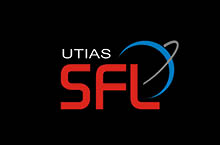|
The Space Flight Laboratory (SFL) at the University of Toronto Institute for Aerospace Studies (UTIAS) was founded in 1998 and is Canada's premier microspace organization. SFL builds low-cost microsatellites and nanosatellites that continually push the performance envelope.
Missions are typically developed with stringent attitude control and data requirements that are striking relative to the budget available. SFL must be innovative while adopting a highly focused approach to development in order to achieve costs at a small fraction of the price of similar satellites developed elsewhere. SFL has developed the Generic Nanosatellite Bus (GNB) and the Nanosatellite for Earth Monitoring and Observation (NEMO) bus to provide low cost, high performance missions to international customers.
SFL arranges launches through its Nanosatellite Launch Service (NLS) and provides customizable separation systems called ?XPODs? for those launches. As part of its complete end-to-end mission capabilities, SFL maintains a mission control center consisting of multiple ground stations.
SFL operates multiple satellites from its mission control center, including MOST, CanX-2, NTS and the BRITE satellites. Each satellite represents an advance in the field and has broken barriers relative to what small satellites can do. The 53-kilogram MOST satellite, Canada's first space telescope, was launched in June 2003 and has been operating successfully for many years despite having been designed for a one-year mission.
The MOST space astronomy satellite has made an overwhelming impact through scientific discoveries related to solar-type stars and exoplanets. CanX-2, launched in April 2008, is Canada's smallest operational satellite - roughly the size of a milk carton. Its technologies push the state of the art in low-power, miniature satellite components. It is also among the smallest scientific satellites in the world to first feature three-axis attitude stabilization.
Nanosatellite Tracking of Ships (NTS), a 6.5-kilogram satellite, was launched together with CanX-2 in April 2008 to demonstrate leading edge ship detection technology from space. NTS was developed on an incredibly fast timeline of only six (6) months, a first for a satellite of this class in Canada and perhaps the world.
|
















